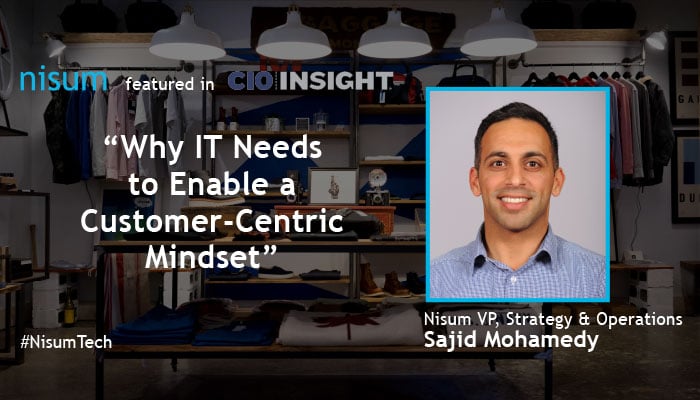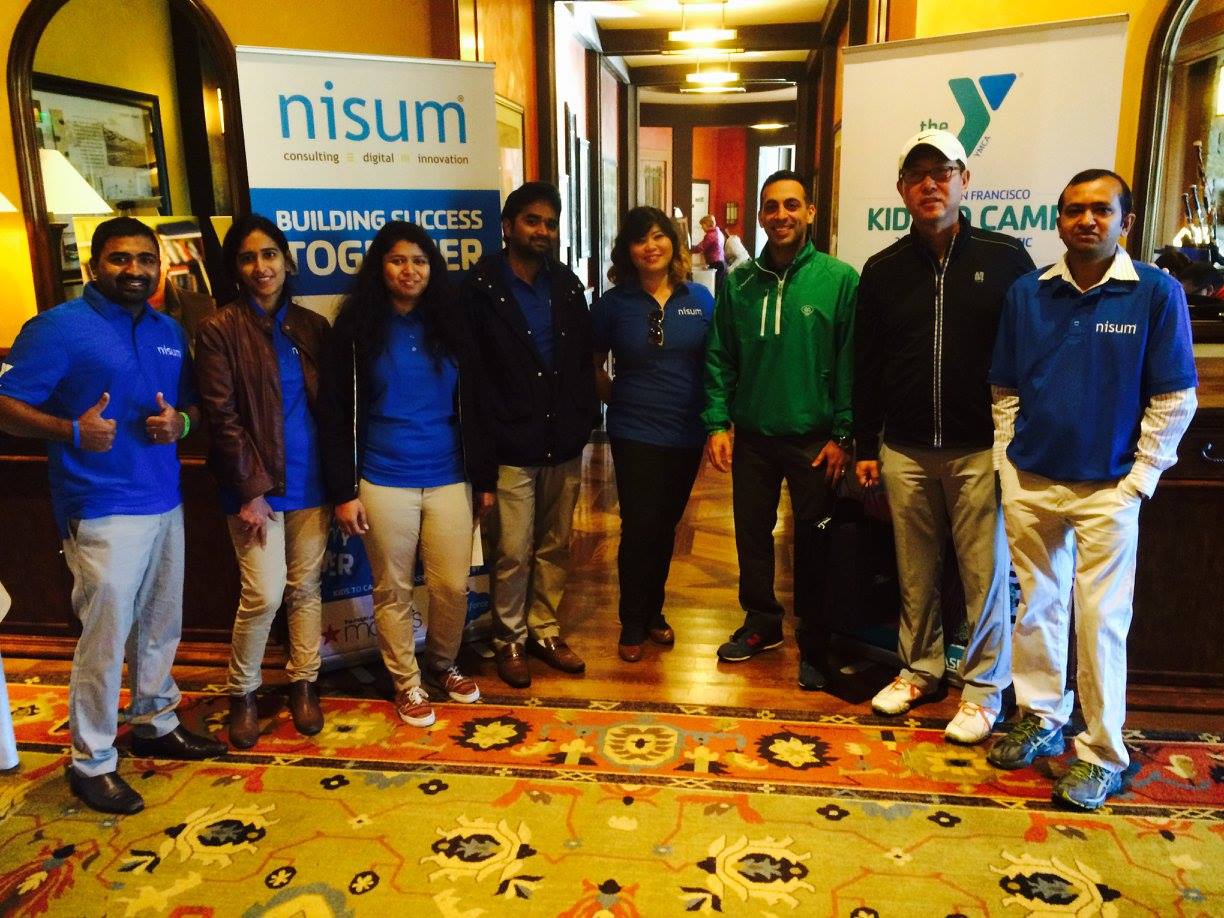Nisum VP of Strategy and Operations, Sajid Mohamedy was featured as a guest author in CIO Insight in "Why IT Needs to Enable a Customer-Centric Mindset." Read it here or find the full text below.

Why IT Needs to Enable a Customer-Centric Mindset
Customers’ ability to interact with your brand through any channel—online, in-store, mobile, social, etc.—is table stakes for today’s businesses. Whether you’re serving the consumer or the business-to-business market, customers expect it. As such, companies have raced to deliver an omnichannel offering.
The business-to-business omnichannel market is growing at a particularly rapid clip. Spending on B2B e-commerce platform technologies, systems and services continues at almost double the pace of business-to-consumer spending, and Forrester predicts that in a few years, the B2B ecommerce market will be worth $1.1 trillion, and the B2C market will reach $480 billion.
Enormous investments are being made on platforms to support e-commerce and omnichannel usage. However, this doesn’t always translate into better business and increased ROI.
Take, for example, a multibrand, multichannel Fortune 500 retailer that must fulfill orders globally through physical stores, as well as online and on mobile and social platforms. Expensive legacy systems for order management, fulfillment and logistics aren’t equipped to perform in today’s digital environment.
Left unaddressed, our retailer will ultimately suffer from various bottlenecks in connecting these backend systems across channels. It will be unable to make rapid customizations, handle easy integrations with its existing systems and scale its business.
Traditionally, the idea of omnichannel and how it is understood and adopted in an organization has largely been driven by marketing, falling under the purview of the chief marketing officer. At first glance, this makes sense, since having an e-commerce presence opens up new customer touchpoints, sales and lead channels. Plus, customers have come to expect it.
However, in practice this approach often means a huge investment in an omnichannel platform that is placed on top of, or “duct-taped” to, the existing technology infrastructure and backend systems. While this strategy might function in the short term, organizations that use this approach are not setting themselves up for future viability—let alone success.
Adopting a Digital-First Business Strategy
Today’s forward-looking enterprises must approach a customer-centric business model that's enabled from beginning to end by an IT infrastructure that supports customers throughout their buying journey—regardless of the channel. Incumbents and entrants alike need to rethink what it means to conduct business in the “age of the customer.”
In short, it means adopting a digital-first business strategy. This does not mean simply digitizing marketing, by using social media, making digital ad buys, or putting other business processes online and leaving it at that.
The key to strategic digital transformation is to adopt a technology foundation that supports dual-speed architecture. Speed 1 supports legacy systems, as well as applications that require a large amount of data storage. Speed 2 supports organizations’ ability to be nimble and flexible in responding to rapid changes in the market.
This two-speed approach supports key business drivers, such as products and services, go-to-market strategies, operations, talent and resources. It also supports disruptive trends in the market, including cloud computing, social, the internet of things (IoT), connectivity, mobility, DevOps and channel ubiquity.
This holistic approach to technology enables a company to truly put customers at the center of its business strategy. The dual-speed framework yields a 360-degree view of the customer; offers insights into customer engagements within and across channels; provides the ability to activate relationships with underserved or unrecognized customers; and gives firms the ability to listen to and respond to customers in real time.
Mobile, social and cloud technology have heralded the age of the customer. Businesses that don’t adapt their technology infrastructure and processes to enable a customer-centric approach are unlikely to compete effectively in the market.
As such, customer engagement is no longer just the CMO’s worry. More than ever before, IT is going to play a critical role in customer acquisition and retention—and have a direct impact on a business’s ability to scale and grow.



